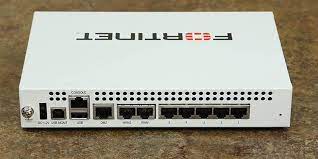Using Single Sign-On (SSO) capabilities in the Fortinet Security Fabric brings several benefits for organizations. Here are the key advantages:
- Enhanced User Experience: SSO simplifies the authentication process for users by allowing them to log in once and gain access to multiple applications and resources within the Fortinet Security Fabric. Users don’t need to remember multiple usernames and passwords, which improves convenience and productivity. It streamlines the user experience and reduces the need for repetitive login actions.
- Improved Security: SSO in the Fortinet Security Fabric enhances security by enforcing strong authentication measures. Users typically authenticate themselves using a central identity provider (IdP) or directory service, such as Active Directory or LDAP. This centralization allows organizations to enforce strong password policies, implement multi-factor authentication (MFA), and apply other security measures consistently across multiple applications and resources. It reduces the risk of weak or reused passwords, enhancing overall security posture.
- Centralized Access Control: SSO enables organizations to implement centralized access control policies. Once a user is authenticated through SSO, their access privileges can be managed and controlled centrally. Administrators can define granular access rules based on user roles or groups, ensuring that users have appropriate access to specific applications, data, or resources within the Fortinet Security Fabric. This centralized control simplifies access management, improves security, and reduces administrative overhead.
- Increased Productivity and Efficiency: SSO eliminates the need for users to repeatedly enter credentials for different applications or resources within the Fortinet Security Fabric. This streamlined authentication process saves time and improves productivity. Users can seamlessly access various applications and resources without interruption, allowing them to focus on their tasks and responsibilities.
- Simplified User Provisioning and Deprovisioning: With SSO, user provisioning and deprovisioning become more efficient. When a user joins an organization, their access to multiple applications and resources within the Fortinet Security Fabric can be provisioned in a single step. Similarly, when a user leaves the organization or changes roles, their access can be revoked or modified centrally, ensuring that they no longer have access to the relevant resources. This simplifies user lifecycle management and reduces the risk of orphaned accounts or unauthorized access.
- Auditing and Compliance: SSO capabilities provide centralized logging and auditing features. Organizations can track user access and activities within the Fortinet Security Fabric, helping to meet compliance requirements. Auditing logs can be used for forensic analysis, troubleshooting, and generating compliance reports, ensuring that organizations have the necessary visibility into user activities and access control events.
- Seamless Integration with Identity Providers: Fortinet’s SSO capabilities integrate with popular identity providers and directory services, such as Active Directory Federation Services (ADFS), SAML, and LDAP. This integration allows organizations to leverage their existing identity infrastructure and extend its capabilities to the Fortinet Security Fabric seamlessly. It simplifies deployment and ensures compatibility with various authentication protocols and systems.
- Increased Efficiency and Productivity: With SSO, users can quickly and securely access multiple applications and services, saving time and effort. This increased efficiency leads to improved productivity as users can seamlessly navigate between different resources within the Fortinet Security Fabric, focusing on their work rather than authentication processes.
By utilizing Single Sign-On (SSO) capabilities in the Fortinet Security Fabric, organizations can enhance the user experience, strengthen security, streamline access management, and improve productivity across their network and security infrastructure. SSO simplifies authentication processes, enforces strong security measures, and provides centralized control and auditing capabilities, contributing to an overall robust and efficient security ecosystem.
SHARE
